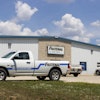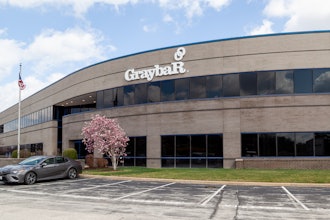CEOs and executive leadership at top performing companies today are finding they share common issues and concerns regarding sales force selection, performance, and retention. A recent study by Growth Dynamics revealed that 78 percent of all C-level executives and sales leadership respondents defined the top concern they face in today’s economic environment is hiring sales people who fit their business and perform. In its 2011 Sales Performance Optimization study, CSO Insights also validated that 42.5 percent of companies struggle with their ability to consistently hire sales professionals that succeed at selling their product offerings.
More than ever before, today’s leaders are asking:
• How do we attract the “right” sales team that performs?
• What is the “picture of top performance” in sales at our company?
• What are the strengths, limitations, and capabilities of our current team?
• Our current team is not changing and adapting to succeed today. What do we do?
Hiring the Right Sales Team
With the plethora of candidates in the job market today it’s easy to want to hire anyone with a sales background or to simply give someone a try, rather than focus on finding the best person for the role. All too often, company leadership believes that if they hire someone with strong industry experience and technical background, they can teach the new hire to sell, only to be frustrated when the new hire doesn’t perform up to expectations. Sales leadership may hire a top performer from a competitor and be disappointed when the new hire does not produce big results for their company.
Unlike other roles within the company, sales success is not optional; revenue must occur. Therefore, no longer can a company risk future business, profits, or customer retention on a bad hire. GDI research proves that top performers will have unique skills, attributes, motivation, and experience that fit your company, culture, and customer.
Solution for Success
The solution is to provide your leadership team and hiring managers with a targeted comprehensive process to attract, interview, qualify, select, develop, and retain the right sales professionals. This is accomplished by requiring your sales leadership (not human resources) to first define the “picture” of top performance in sales for your company. The resulting picture (what GDI calls a benchmark) details clearly the attributes, experience, skills, and motivation for top sales performance.
Armed with this picture, or sales team benchmark, your sales leadership can effectively attract candidates who fit the role criteria and then select, develop, and retain a sales team that fits your organization. And the same information can be used to assess, develop, and train your existing sales team to help them adapt to improve sales performance and success in their roles.
Research has shown that by assessing sales candidates, you can significantly improve your selection process. A 2010 Sales Performance Optimization survey by CSO Insights found that more than 80 percent of firms that assess candidates before hiring said it either improved or significantly improved their “hiring success rates,” as related to ongoing performance and retention.
However, many companies rely on predictive assessments that compare sales candidates to industry standards that today are outdated, inaccurate, or not relative to your business. The right people in sales will have unique skills, attributes, motivation, and experience that fit your company, your culture, and your customer as defined in the picture of top performance for your company.
To effectively select and develop a sales team that performs, fits your company and successfully supports your customers, follow these critical stages (as referenced in chart 2.3):
STAGE ONE – Create a Picture of Top Performance.
This is a company-specific, accurate picture or benchmark of top performance in a sales role that defines the skills, behaviors, attributes, motivation, and experience required for top performance.
STAGE TWO – Recruit & Attract the Right People.
The only way to attract the right people is to define a benchmark, or picture of top performance, to accurately target, attract, and define role-specific job advertisements to market the role and attract the right sales professionals.
STAGE THREE – Pre-screen & Qualify.
The initial pre-screen interview should be conducted by phone to qualify your candidates for background, skills, and related experience and interest in the role.
STAGE FOUR – Role-Specific Interviews.
With results from the benchmark, a measurable interview program can be established with defined pre-screen, on-site, and final interview questions linked specifically to the role. Hiring managers can then focus their efforts on candidate responses for objective evaluation.
STAGE FIVE – Assess, Test & Select.
Assess the right candidate’s sales attributes, skills, motivation, and characteristics and compare them to the established benchmark for role fit. The results should validate what you have learned through the interview process and can also be used to develop and retain upon hire.
STAGE SIX – Lead, Develop & Retain.
Engage the new employee in setting goals and identifying needs for leadership support, training, and development to optimize sales efforts and promote success and retention.
Sales Team Transformation & Retention
With CEO and C-level leadership’s involvement in the success of the sales force, there is also strong focus on the performance and retention of their existing sales team. In building a sales force that helps grow the company, executive leadership realizes the critical importance of improving the performance of the current team and retaining their top performers. By assessing the existing teams’ strengths, skills, and motivation and gaining their insights and recommendations, sales leadership can target specific areas for training, improvement, and support for sales force transformation and retention.
Successful top performers require strong leadership, want to be respected, insist on knowledge-based information that validates performance goals, and want to be held accountable and challenged to succeed. Equally important, they seek compensation and rewards that fit the role expectations and performance accountabilities. Sales leadership must eliminate obstacles by arming the sales force with targeted training, knowledge, and coaching so they can adapt and improve.
Today, as the industry consolidates, a company’s competitive advantage lies in its sales force. By selecting the right sales team, sales leadership can focus on advancing and retaining top performers to optimize sales efforts — resulting in new business opportunities and customer retention.
As loyal customers expect the sales force to truly understand their business, make recommendations, and offer solution-based services, you must make sure you select and retain the right sales team and take an active role in helping your sales force adapt to meet the challenges of today and the future.
Ty Swain is CEO of Growth Dynamics. GDI provides sales leadership solutions for the selection, performance and retention of top performers in today’s leading manufacturing and distribution companies. For more information visit www.gdicorp.com.



















